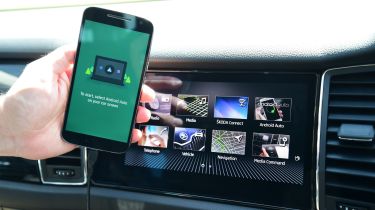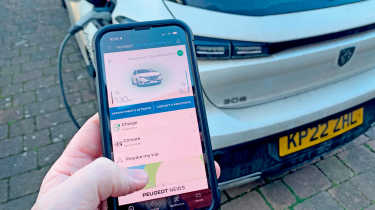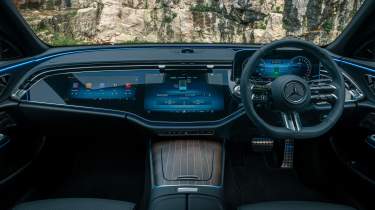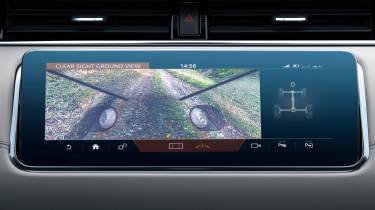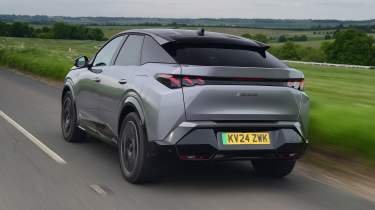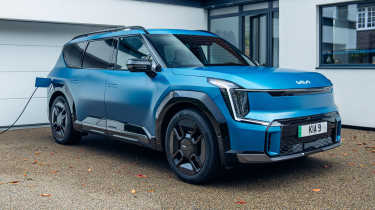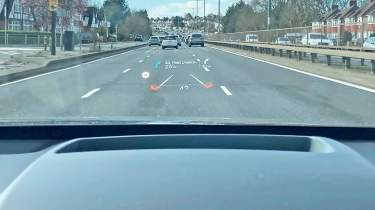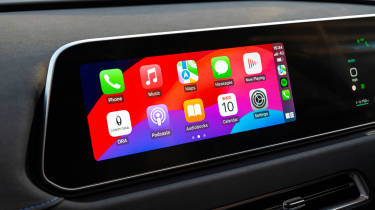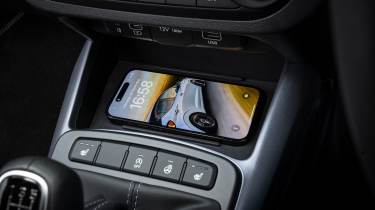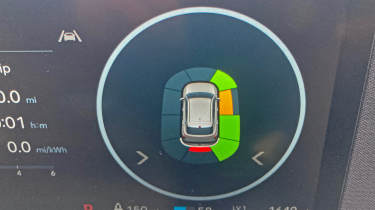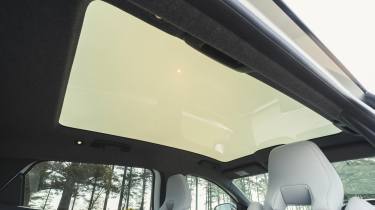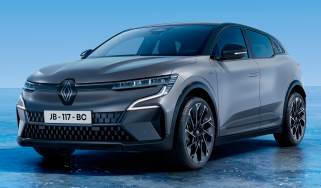Essential car tech 2025: the new car option boxes every buyer should tick
Our experts reveal which boxes they’d tick on the options list if they were buying a car
Keeping up to speed with the latest car technology can be an exhausting endeavour. Because as cars become increasingly safer, more reliable and more efficient, manufacturers turn to attention-grabbing technology to draw you into the showroom and get you signing on the dotted line – hopefully after splashing out a bit more on a few choice extras. But with so many pieces of technology available, much of it optional, buyers can end up being left bewildered.
To give you a steer on which features you should be sure your next car has, we asked our experts what they would spend their own money on when specifying a new car. Our road testers drive hundreds of cars every year, and the majority of these come ‘fully loaded’, as makers give us the chance to assess not just the cars, but their features as well. Read on to find our favourite car tech.
Pre-heating car apps
By Steve Walker
Heated windscreens are fantastic for getting car journeys off to a seamless start on cold mornings, but why wait for your screen to melt the ice away when you can make your whole car toasty warm long before you even climb aboard?
Electric powertrains and connectivity merge beautifully in the form of app-based car pre-heating systems. Set your desired cabin temperature and your departure time on your smartphone app, and your car makes sure it’s warmed and ready, melting any ice on the windows in the process. Alternatively, just turn the car’s climate control on remotely when you look out of the window and see mother nature doing her worst.
Some cars with internal combustion engines can do this, but they usually need to start the motor. With electric cars, the heaters can simply switch on, and if the car has a heat pump, the desired temperature can be achieved without too much impact on the driving range. This pre-conditioning tech has the added benefit of raising the temperature of the battery, so it can charge more efficiently too.
Passenger screens
By Jordan Katsianis
Most passenger displays are just a carbon copy of the main interface with a few changes to what you can and can’t do on them. They come in many forms, and while some are there purely for bragging rights – Ferrari and Lamborghini have installed passenger displays that essentially double up on the driver’s display showing speed, revs and gear position – they became much more useful when manufacturers such as Porsche and Mercedes introduced their versions.
In these examples, the passenger’s display mirrors the main interface, rather than the driver’s screen, and allows an individual to access media, navigation and other settings without disturbing the driver’s screen, and potentially distracting them. In many cases they can also show video media which, thanks to clever screen technology, is invisible to the driver.
In cars where the main screen is angled towards the driver, such Audi’s new-generation MMI set-up, the passenger display is a particularly welcome addition to easily operate many functions without needing to reach over towards the driver.
Land Rover Clearsight
By Dean Gibson
The advent of advanced safety systems has seen a proliferation of cameras appear on cars in virtually every class. Reversing cameras are standard on all bar the most basic models these days, while moving up the price scale adds front cams and even 360-degree surround views.
Among the cleverest set-ups is Land Rover’s ClearSight system. One highlight is the digital rear view mirror that eliminates rear blind spots completely, courtesy of the real-time feed from a roof-mounted camera – very handy in a Defender with a spare wheel mounted on the back door. Even better is the front camera that helps you ‘see’ through the car’s bonnet.
While the car’s tall front end creates a large blind spot straight ahead, the front-facing camera in the grille has a setting that replicates what you’d see if the bonnet wasn’t there at all.
Rear screen wipers
By Chris Rosamond
Manufacturers who once used to promote these as ‘must have’ options now casually delete them from new car spec sheets as though we never cared. The provision of a rear-view camera and parking sensors is a typical justification for not fitting a rear wiper, but these cameras only work when you have reverse gear engaged. In fact, rear wipers are a vital safety aid in all sorts of scenarios – especially in town.
The arrival of EVs kicked off the recent trend to dump rear wipers, with Polestar notably claiming a wiper would “spoil the coupé lines” of its 2 hatchback, but on an SUV-style family car like the Peugeot E-3008 the lack of a rear wiper seems utterly perverse.
It’s a message that’s getting through in places, at least, because MG and Hyundai have both recently launched cars without rear wipers, then had second thoughts and added them.
Vehicle to Grid charging
By Alex Ingram
A piece of automotive tech that can reduce your energy bills? It sounds unbelievable, but it does exist. It’s called Vehicle to Grid (or V2G) and you’ll find it on plenty of new EVs, including the Kia EV9 (right). In simple terms, by plugging your EV into the mains, it means that your home energy can be drawn from your car when demand on the National Grid is high.
When demand is low or supply is high (there are times of the year when the UK actually generates too much solar and wind energy), the car can recharge. On the right energy tariff, you can reduce your charges hugely – or even be paid for the energy taken from your car. It’s easy to do, too – V2G-enabled EVs can ‘smart charge’
to ensure that the battery will be ready the next time you need it.
Head-up display
By Max Adams
A head-up display, or HUD for short, is a handy way of getting vital information to you without needing to avert your gaze from the road. It’s done by projecting the info on to a reflective surface that’s bonded within the windscreen’s structure or applied as a special coating to the outside of the glass, or to a retractable screen as found on a number of Stellantis cars.
HUD first appeared on a production car in the late eighties, with the S13 Nissan Silvia, but it wasn’t until the configurable display of the C5 Chevrolet Corvette arrived about a decade later – which allowed you to see the fuel gauge, oil pressure or coolant temperature next to your speed and engine revs – that I realised an HUD could be far more than a novelty.
Fast forward to today, and BMW’s set-up can show you which lane or lanes you need to be in when using the car’s sat-nav. Indeed, the German brand is taking HUD a step further, with BMW Panoramic iDrive projecting a 3D display right across the base of the windscreen. max adams
Apple CarPlay/Android Auto
By Ellis Hyde
No matter how much car makers spend developing their latest and greatest infotainment systems and user interfaces, let’s be honest, most people prefer Apple CarPlay or Android Auto. Including me. They let you use your favourite navigation and music apps, and your smartphone’s virtual assistant.
Plus, a lot of cars now feature wireless CarPlay and Android Auto connectivity, so using them is even more seamless – and because they rely on your smartphone’s super-fast computing power, everything loads quickly. Frankly, they’re godsends, and it's no surprise that brands such as Renault have turned to Google to create their infotainment systems. The next generation of CarPlay, which can take over a car’s entire dash, sounds particularly exciting.
Wireless charging
By Alistair Crooks
Wireless smartphone charging has become so commonplace in modern cars that you can find it on superminis such as the Volkswagen Polo and even city cars such as the Hyundai i10. I’ve been so spoiled by wireless charging in the past few years that now I often don’t bother taking a wired charger with me.
Given how many wired chargers I’ve gone through in my life (they seem to be made of cheese), wireless charging saves me a bit of money, too. Not all car makers get it right, though. The MG4, like a few others, has
a shallow tray for your phone to sit on and you’ll see your expensive smartphone fly across the cabin on hard turns if you’re not careful. Some pads can also overheat your phone during the charging process.
Blind-spot monitoring
By Tom Jervis
Unless you’re a contortionist, leaning over your shoulder to check your blind spot can be a pain – especially when wanting to change lanes at high speeds. With this in mind, blind-spot monitoring can come in real handy, especially on longer motorway stints or when dashing from lane-to-lane in tight city traffic.
Recently, however, some brands have taken this concept to the next level – notably Hyundai and Kia. Top models with surround-view cameras now display a live feed in the gauge cluster of whatever is in your respective blind spot whenever you indicate in a particular direction. This second set of eyes means you’ll spend less time craning your neck like a giraffe and more time focusing on the road in front of you.
Panoramic roof
By Richard Ingram
A panoramic roof is an essential piece of in-car kit that’s worth every penny at the point of purchase. I’m not that fussy, either; although I love to be able to slide back the sunshade at the flick of a switch, my current car’s fixed glass roof makes the otherwise dark interior feel light and airy.
Renault’s Solarbay roof takes things to a new level. It's fitted to models such as the Rafale, Scenic and Symbioz, and the firm has developed a piece of electrochromatic glass that can be darkened on demand. It’s got four settings, so you can even have it sunny in the front and shady in the back if the kids are complaining about the reflections or glare on their treasured tablets. The best bit? You can adjust the settings via voice control by simply saying “Hey Google, close Solarbay”, or “Hey Google, open Solarbay at the front”. Honestly, once you’ve tried it, you’ll struggle to go back.
Buy a car with Auto Express. Our nationwide dealer network has some fantastic cars on offer right now with new, used and leasing deals to choose from...
Find a car with the experts

